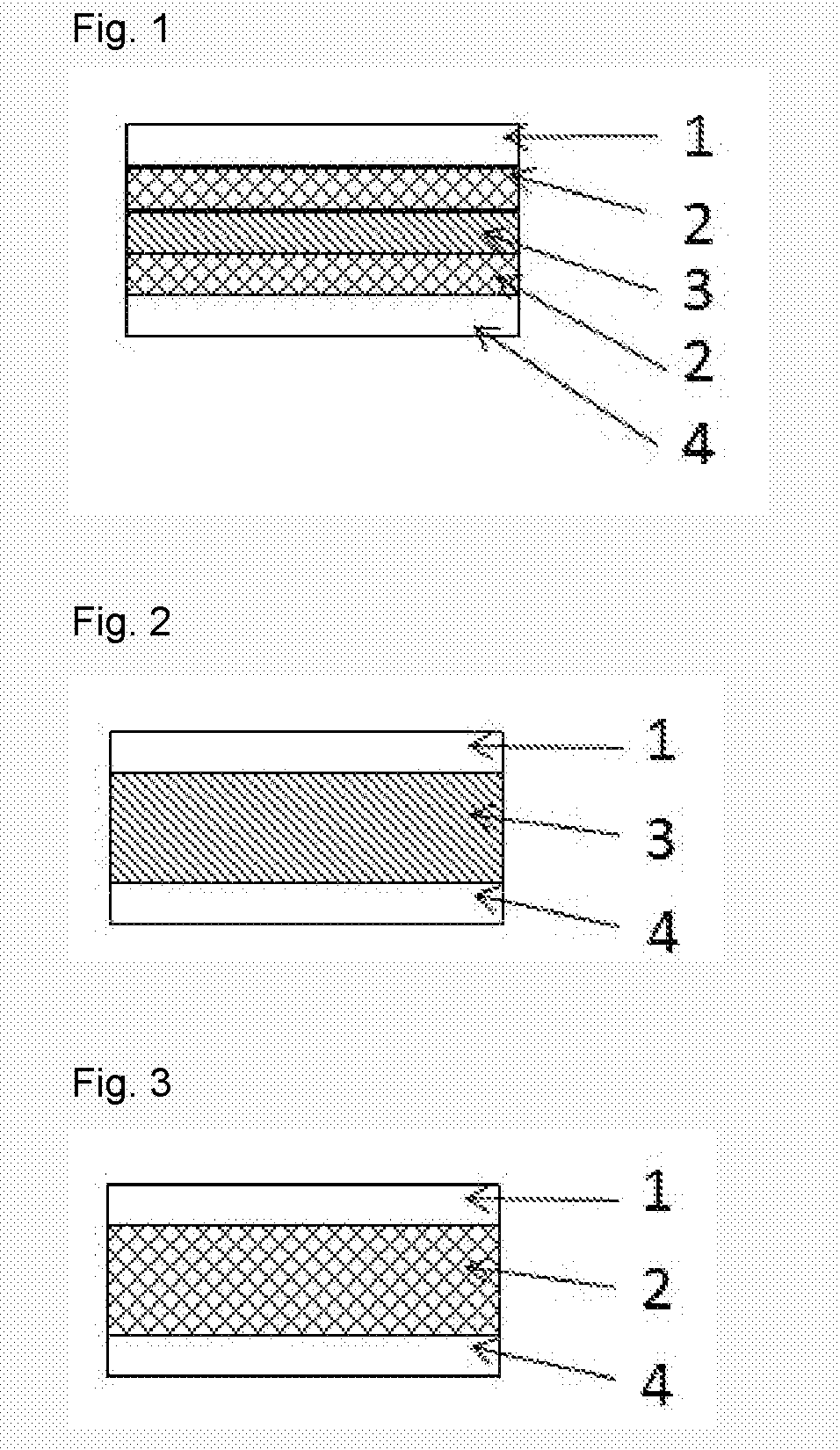Thermal conductive member and heat dissipation structure including the same
- Summary
- Abstract
- Description
- Claims
- Application Information
AI Technical Summary
Benefits of technology
Problems solved by technology
Method used
Image
Examples
example 1
[0060]17.50% by mass of amorphous boron nitride powder (“SP” manufactured by Denka Co., Ltd.), 7.5% by mass of hexagonal boron nitride powder (“MGP” manufactured by Denka Co., Ltd.), and 0.47% by mass of calcium carbonate (“PC-700” manufactured by Shiroishi Kogyo Co., Ltd.) were mixed with a Henschel mixer, and then 74.53% by mass of water was added and grounded in a ball mill for 5 hours to obtain a water slurry. Furthermore, 0.5% by mass of polyvinyl alcohol resin (“Gosenol” manufactured by Nippon Synthetic Chemical Co., Ltd.) was added with respect to the total mass of the obtained water slurry, and heat-stirred at 50° C. to be dissolved. After that, the spheroidizing treatment was performed by a spray dryer at 230° C. of a drying temperature. A rotary atomizer was used for the spray dryer as the spheroidizing device. The resulting treated product was filled in a boron nitride container and sintered at 2000° C. of atmospheric pressure and 5 L / min of a nitrogen flow rate in a batc...
example 2
[0069]In Example 2, the sintering temperature was set to 2100° C. for preparing the boron nitride sintered body in the production of the insulating material A, which is different from Example 1.
example 3
[0070]In Example 3, the sintering temperature was set to 1800° C. for preparing the boron nitride sintered body in the production of the insulating material A, which is different from Example 1.
PUM
| Property | Measurement | Unit |
|---|---|---|
| Percent by volume | aaaaa | aaaaa |
| Percent by volume | aaaaa | aaaaa |
| Fraction | aaaaa | aaaaa |
Abstract
Description
Claims
Application Information
 Login to View More
Login to View More - R&D
- Intellectual Property
- Life Sciences
- Materials
- Tech Scout
- Unparalleled Data Quality
- Higher Quality Content
- 60% Fewer Hallucinations
Browse by: Latest US Patents, China's latest patents, Technical Efficacy Thesaurus, Application Domain, Technology Topic, Popular Technical Reports.
© 2025 PatSnap. All rights reserved.Legal|Privacy policy|Modern Slavery Act Transparency Statement|Sitemap|About US| Contact US: help@patsnap.com

